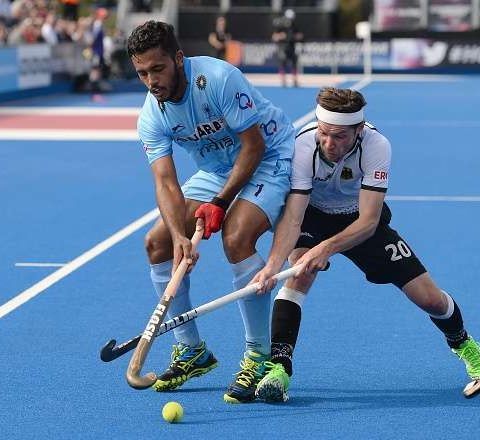How Long is a Hockey Game
Hockey is a thrilling sport known for its fast pace and intense action. Understanding the duration of a hockey game is essential for both fans and players. The length of a hockey game varies depending on the type of hockey being played and the specific rules of the league or competition. This guide explores the duration of hockey games across different formats, including ice hockey, field hockey, and variations in professional and amateur leagues.
Duration of an Ice Hockey Game
1. Standard Game Length
- Three Periods: An ice hockey game typically consists of three periods. Each period lasts 20 minutes of regulation play, totaling 60 minutes of game time. Read about Periods in Hockey
- Intermissions: Between periods, there are intermissions. In the NHL and many other leagues, these intermissions are usually 15 minutes long. This time allows players to rest, coaches to make adjustments, and the ice to be resurfaced if needed.
2. Overtime and Shootouts
- Overtime Rules: If the game is tied at the end of regulation, it proceeds to overtime. In the NHL and many other leagues, the overtime period lasts 5 minutes and is played under sudden-death rules, meaning the first team to score wins the game.
- Shootouts: If the game remains tied after overtime, a shootout is used to determine the winner. Each team selects a few players to take penalty shots. The team with the most goals after these shots wins the game.
3. Average Game Duration
- Regulation Time: Without overtime or shootouts, a standard ice hockey game lasts approximately 1 hour and 15 minutes, considering the three periods and intermissions.
- With Overtime and Shootouts: Including overtime and a potential shootout, the game can extend to around 1.5 to 2 hours.
Duration of a Field Hockey Game
1. Standard Game Length
- Two Halves: A field hockey game is divided into two halves, each lasting 35 minutes. This totals 70 minutes of regulation play.
- Halftime Break: There is a halftime break of 5 to 10 minutes, during which teams regroup and strategize.
2. Overtime and Shootouts
- Overtime Rules: In many field hockey tournaments and leagues, if the game is tied at the end of regulation, it proceeds to overtime. This can be a 7.5-minute sudden-death period or a series of 7.5-minute halves, depending on the competition.
- Shootouts: If the game remains tied after overtime, a shootout may occur, involving penalty shootouts to determine the winner.
3. Average Game Duration
- Regulation Time: Without overtime, a field hockey game lasts approximately 1 hour and 15 minutes.
- With Overtime and Shootouts: Including overtime and a shootout, the game can extend to around 1.5 to 2 hours.
Duration of Other Hockey Variants
1. Ice Hockey in Different Leagues
- NHL (National Hockey League): Follows the standard three-period format with 20-minute periods, 15-minute intermissions, and 5-minute overtime periods.
- International Ice Hockey: Also adheres to the three-period format with similar timing rules for intermissions and overtime.
2. College Hockey
- NCAA Hockey: Uses the same three-period format as professional ice hockey, with 20-minute periods, 15-minute intermissions, and 5-minute overtime periods if necessary.
3. Women’s Ice Hockey
- General Structure: Women’s ice hockey follows the same period structure as men’s ice hockey, with three 20-minute periods, 15-minute intermissions, and a 5-minute overtime period if needed.
Factors Affecting Game Duration
1. Game Flow and Stoppages
- Penalties and Injuries: Game stoppages due to penalties, injuries, or video reviews can extend the duration of the game.
- Commercial Breaks: In professional leagues, commercial breaks during TV broadcasts can also impact the total duration of the game.
2. Overtime and Shootout Formats
- Different Competitions: Various leagues and tournaments may have different rules for overtime and shootouts, affecting the overall length of the game.
3. Player and Team Strategies
- Tactical Adjustments: Teams’ strategies and tactical adjustments during the game can influence the flow and duration, particularly in closely contested matches.
Conclusion
The duration of a hockey game varies depending on the type of hockey and the specific rules of the league or competition. Ice hockey games typically last around 1.5 to 2 hours, including periods, intermissions, and potential overtime and shootouts. Field hockey games, with their two halves, also have a similar total duration, extending with overtime and shootouts if needed. Understanding the timing and structure of hockey games enhances the experience for fans and players alike, providing insight into how the sport is organized and how games unfold.
FAQs
Q: How long is a typical ice hockey game?
A1: A standard ice hockey game lasts approximately 1 hour and 15 minutes of regulation time, including three 20-minute periods and intermissions. With overtime and a potential shootout, the game can extend to around 1.5 to 2 hours.
Q: What is the length of a field hockey game?
A2: A field hockey game consists of two 35-minute halves, totaling 70 minutes of regulation play. The game can last up to 1.5 to 2 hours with overtime and shootouts.
Q: Do different hockey leagues have varying game durations?
A3: While the fundamental structure of hockey games is similar, different leagues and competitions may have variations in game duration due to different rules for overtime, shootouts, and stoppages.
Q: How do intermissions affect the length of a hockey game?
A4: Intermissions between periods provide breaks for players and coaches. In professional ice hockey, these intermissions are usually 15 minutes long, contributing to the overall duration of the game.
Q: What factors can cause a hockey game to last longer than usual?
A5: Factors such as penalties, injuries, video reviews, commercial breaks, and extended overtime or shootouts can all contribute to a hockey game lasting longer than the standard duration.

Ben Johnson is a versatile writer with a passion for exploring diverse topics ranging from technology trends and sustainability to travel and personal development. With a knack for transforming complex ideas into engaging content, Ben’s articles aim to inform and inspire readers, providing valuable insights and practical tips for navigating modern life. Whether uncovering the latest innovations or exploring cultural nuances, Ben’s writing captivates audiences by blending curiosity with clarity, making complex subjects accessible to all.

